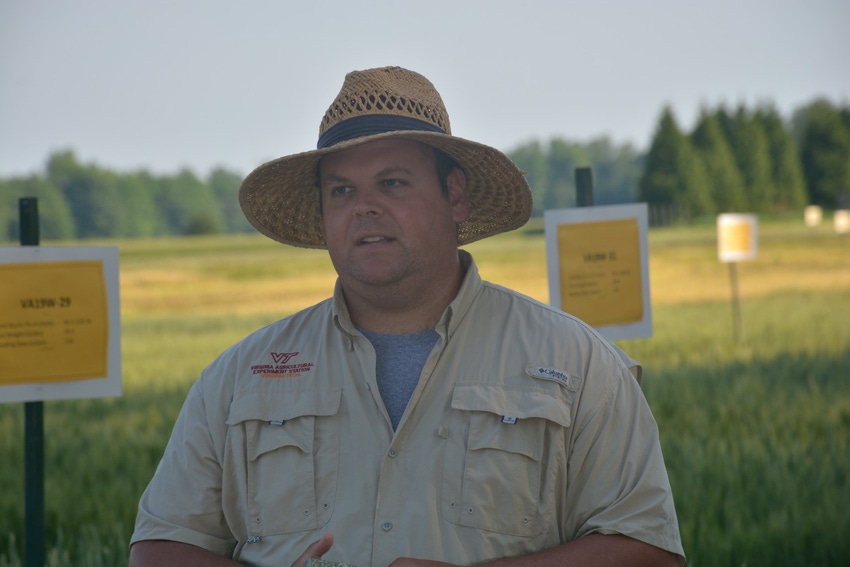
With its humid climate, the Mid-Atlantic is ground zero for Fusarium head blight, or scab, in both wheat and barley. This is why Virginia Tech's small grains breeding program is committed to finding varieties that both yield well and are resistant to the disease.
Speaking at the Virginia Small Grains Field Day at the Eastern Virginia Agricultural Research and Extension Center in Warsaw recently, Josh Fitzgerald, small grains research associate at Virginia Tech, said breeding for Fusarium head blight resistance is a pillar of the university's breeding program for both wheat and barley.
"We're up against a formidable opponent here. The pathogen overwinters on corn stubble. It performs optimally in moist humid conditions. The Mid-Atlantic is an optimum environment for Fusarium head blight. As more and more growers are going to no-till or conservation tillage behind corn, there is a threat for head scab epidemics," Fitzgerald said.
Virginia Tech is part of the U.S. Wheat and Barley Scab Initiative founded in 1998 to develop effective measures that minimize the threat of Fusarium head blight. Fusarium head blight is a major disease across the United States reducing yield and producing mycotoxins that impact human and animal health. Fitzgerald said the initiative is important for assisting breeders and plant pathologists in developing varieties resistant to the disease.
"The main objective of our program is to try to release better yielding, adaptive, more resistant varieties to our growers. With that being said, some of the main strategies that we are implementing are not only looking for native resistance, but also utilizing marker assisted selection. We also use double haploid technology to try to speed up the delivery of new lines through our program," Fitzgerald said.
The challenge is improving both Fusarium head blight resistance and yields at the same time, which is true for both wheat and barley.
"For wheat, we are going to focus on genomics. Hopefully, we will be able to predict which varieties will do better...before they even hit the field. We have been able to genotype a large portion of our breeding material," Fitzgerald said.
This same strategy is used in barley breeding. "We are looking for native sources of resistance. We have used some spring-type lines that have shown pretty good resistance. We are trying to top cross those to high yielding varieties adapted for the Mid-Atlantic," Fitzgerald said.
About the Author(s)
You May Also Like






